パックラフト・アディクト | #33 ヨーロッパにある国境の川を旅する
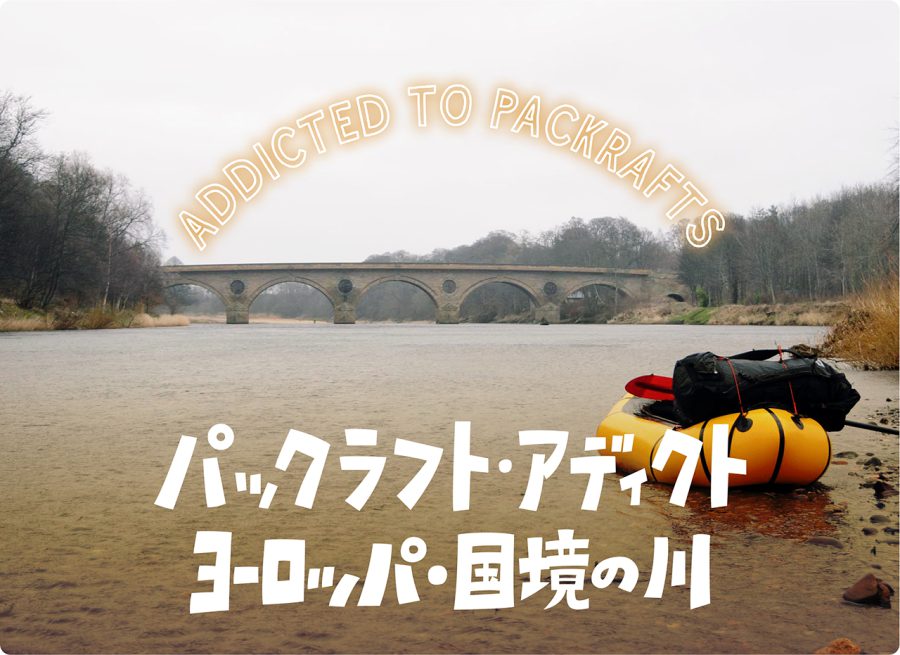
Packrafting Border Rivers
Why borders fascinate me
I was born in the Soviet Union and national borders for me were something permanent, impenetrable, serious…
You cannot just pop over a border to neighbouring country – you need to go through a long and painstaking process of getting a visa (if you could even get it) and, in some cases, an exit visa as well (yes, there was one of those in the USSR).
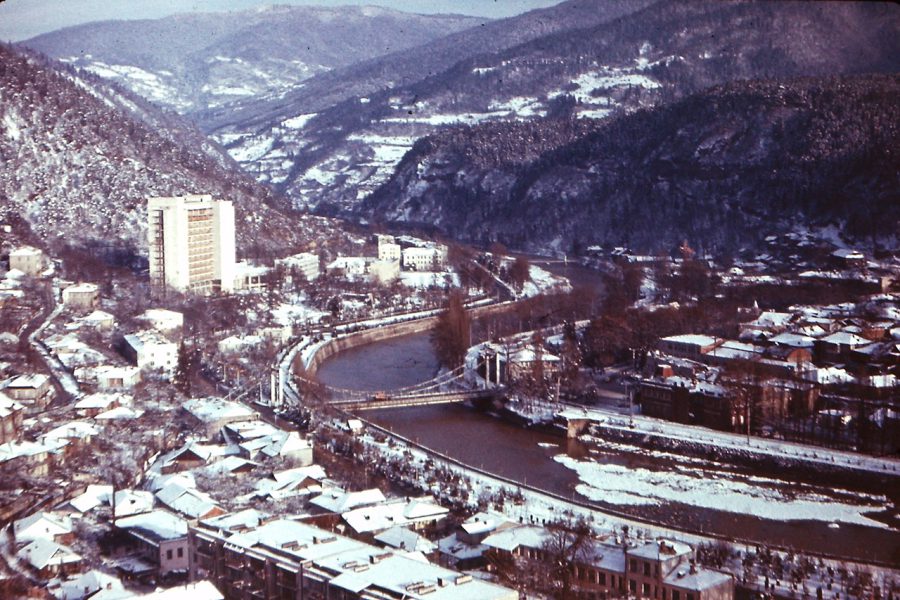
After that you needed to get to a border crossing point, wait for hours just to undergo a very strict and unbelievably unpleasant check by the border guards and custom officers (on both side), and only then you were actually able to enter that country. And the rest of the border would be rows of barbwire, watch towers and German shepherds, mine fields and no man’s land, to cross which meant serious trouble.
I have been living in the Netherlands for almost 19 years now and, even before that, I had travelled to Europe and seen their relaxed attitude to their ‘internal’ borders. Even my wife, who is Polish and was born during the Socialist times, does not share my reverence to and fascination with the borders. I suppose it must have been different for them still.
My attitude towards borders is perfectly illustrated in a 1990 Soviet comedy ‘Passport’, directed by Georgi Daneliya, about two half-brothers, one of whom is supposed to immigrate to Israel.
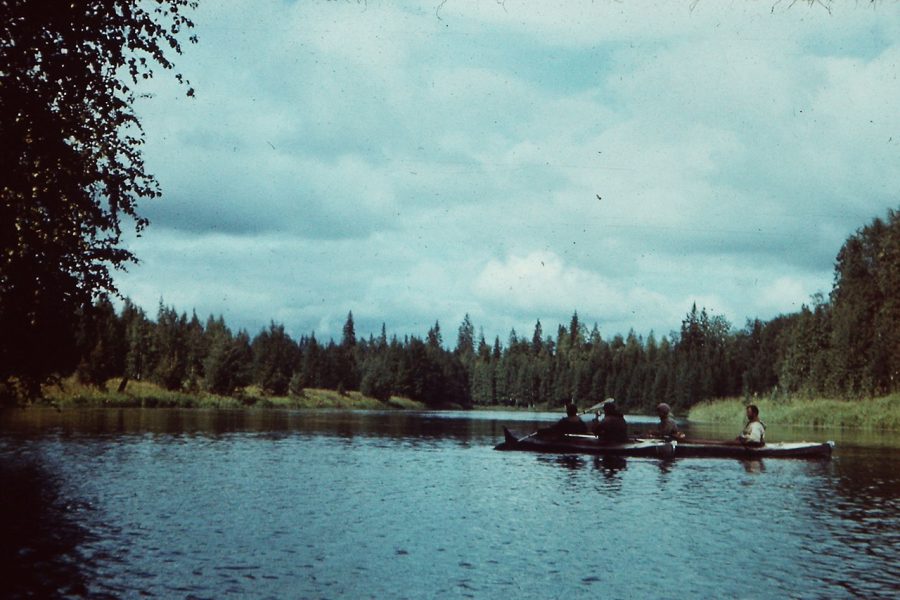
However, due to a confusion, his half-brother is forced to leave the country instead and this film shows a series of his misadventures on his journey back to the Soviet Union, on which he had to cross various national borders (some of which had barbwire and minefields) and continuously ended up in prisons.
The last border the main character of this film is crossing is not much more than a shallow river, on the other side of which is his home country he is so eager to get back to.
Rivers as boundaries
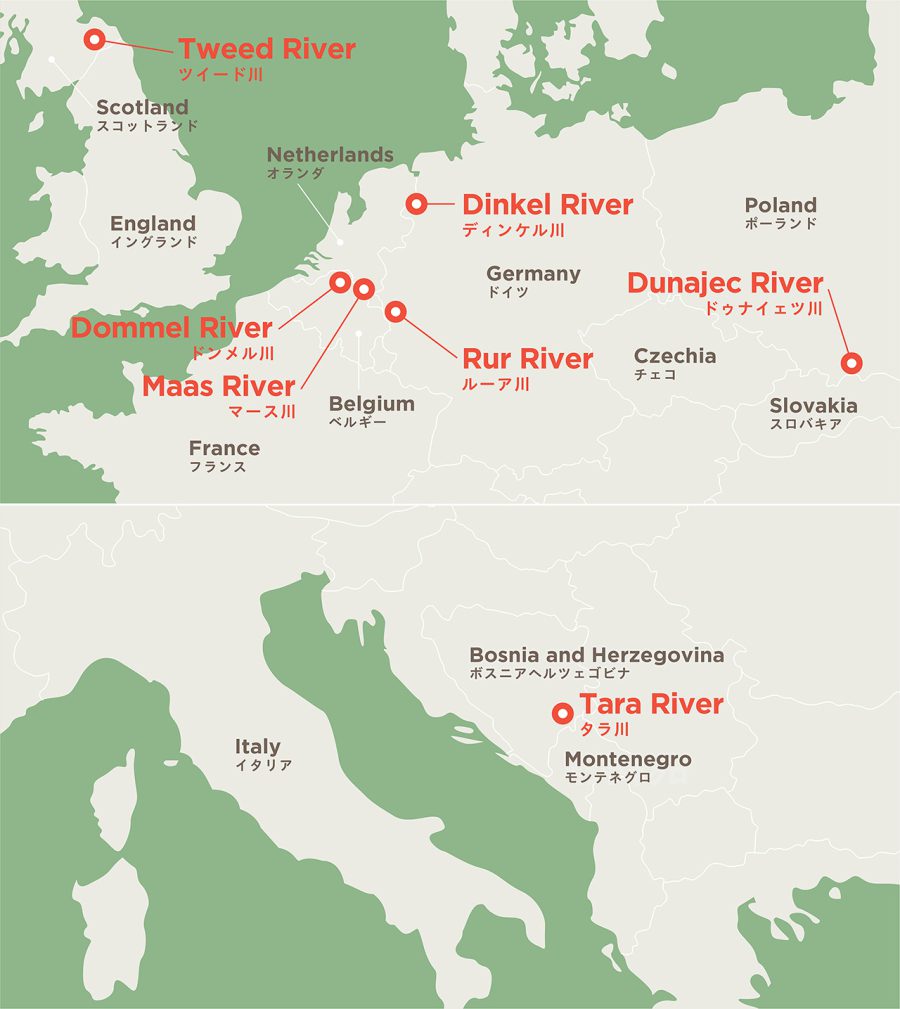
Starting as natural barriers between different peoples, rivers have been used as borders by various countries. What makes these rivers very interesting for me is that, due to often some convoluted relationships between countries, they remain often more natural and less interfered with by the man.
The first such border river I paddled was the Grensmaas (which literally means the Border Meuse). This is a 47 kilometre section of the Meuse that forms the border between the Netherlands and Belgium. The river here is relatively shallow (most of the water is diverted ito a navigable canal), but it has some small rapids and is rather beautiful for what it is.
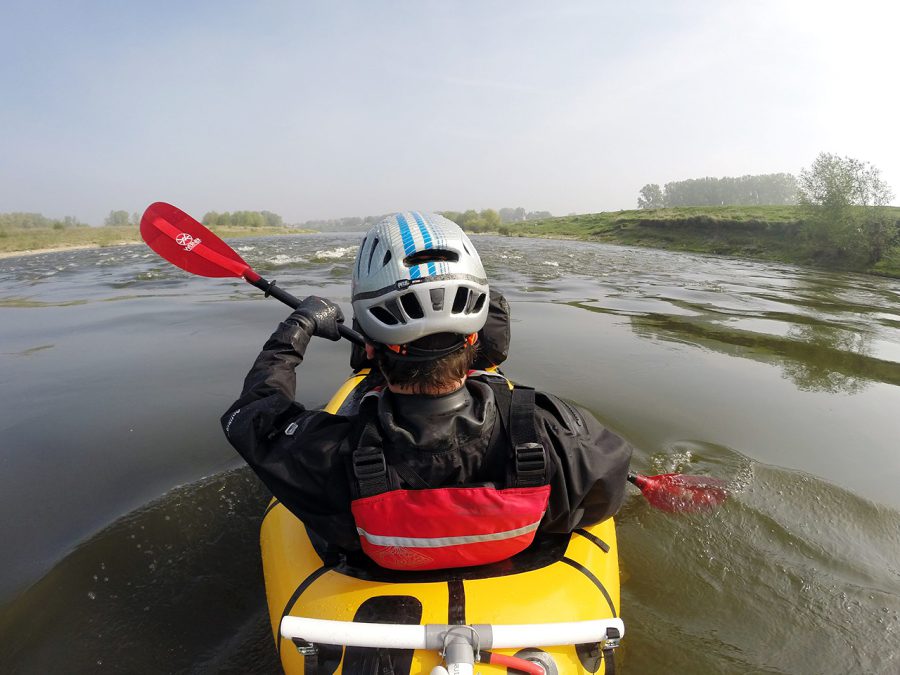
I went there together with Patrick, the friend with whom I have Hikeventures outdoor blog (https://www.hikeventures.com/packrafting-grensmaas/). It was just at the beginning of our paddling carriers and we found the rapids (Class I-II) rather exciting. And indeed, it is a relatively good starting river for a novice paddler. Another advantage of it is that it offers enough water throughout the year, and you do not need to have a permit to paddle it.
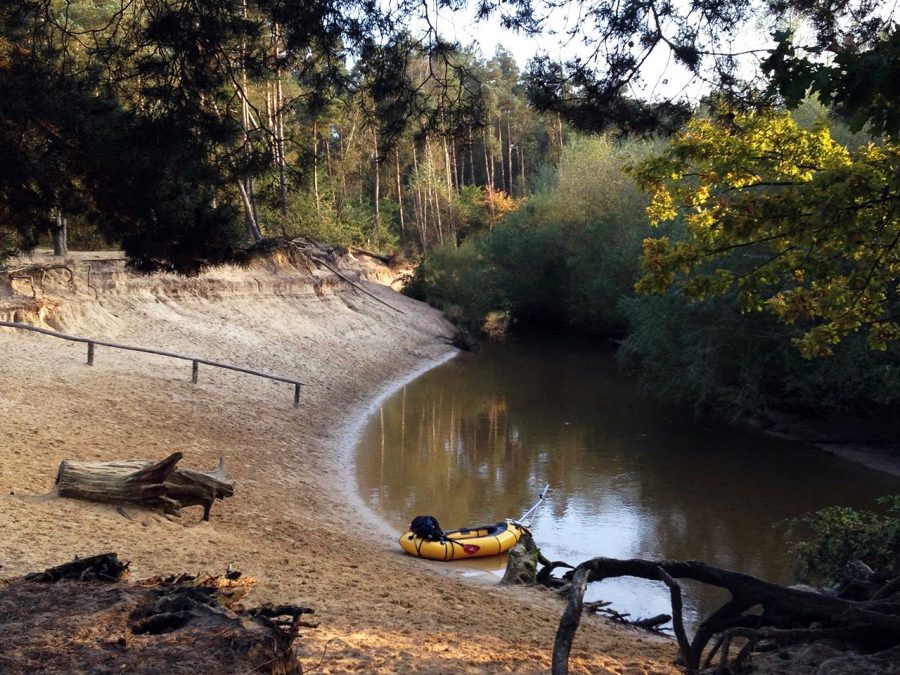
Though the first one, the Grensmaas was not the only ‘border river’ I have paddled. Since then, I have paddled the Dinkel (Germany – the Netherlands), the Tweed (Scotland – England), the Dunajec (Poland – Slovakia), twice the Tara (Montenegro – Bosnia and Herzegovina), the Dommel (https://youtu.be/p_rgCe1CAaE; Belgium – the Netherlands) and the Rur (Belgium – Germany). I have also returned to the Grensmaas once again, but this time with a group of Dutch and Belgian packrafters.
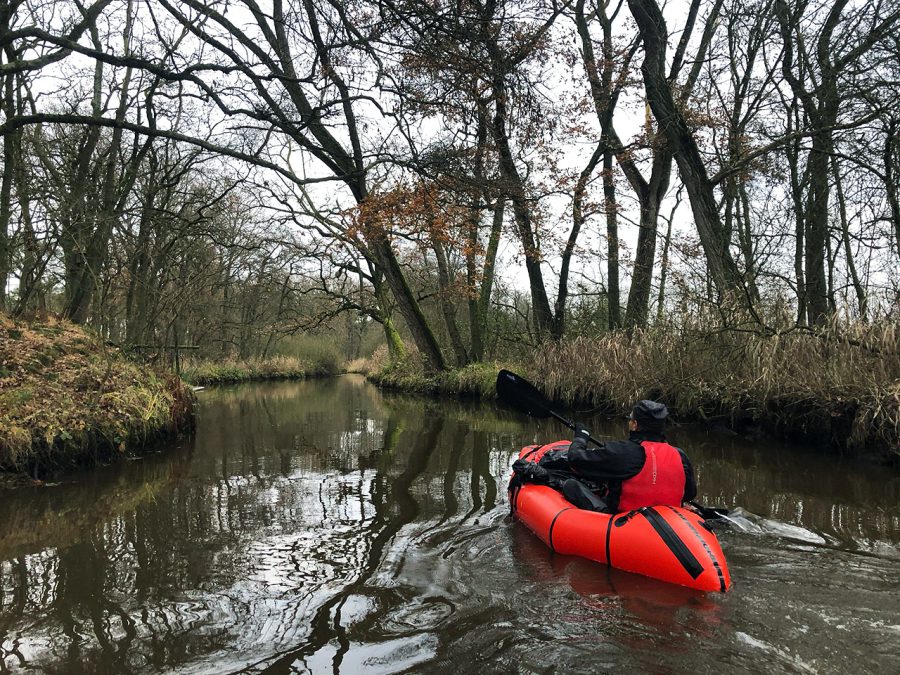
Some of these rivers just cross a country border (as in case of the Dommel) or run for a few hundred meters between the two (e.g., the Dinkel). Others, such as the Grensmaas, the Tweed, the Dunajec and the Tara, have a substantial part of the border divided by them. None of them, however, resembles anything what I thought borders were when I was growing up. There are definitely places and the rivers like that, but I have not paddled there. Yet.
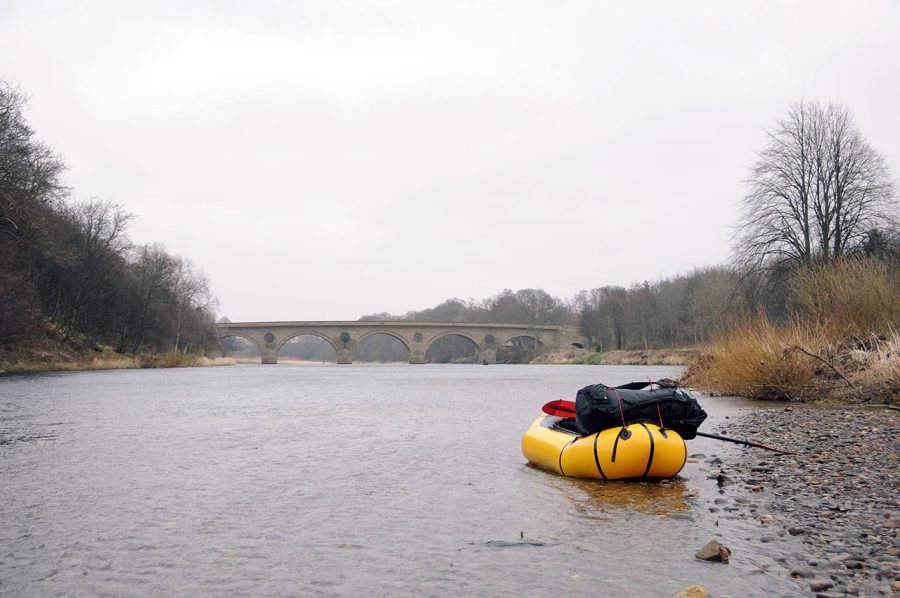
The most interesting and ‘impermanent’ border river I have paddled was the Rur (please see my previous article). It is not just one of regular border rivers, but it meanders through a very special and complicated border itself.
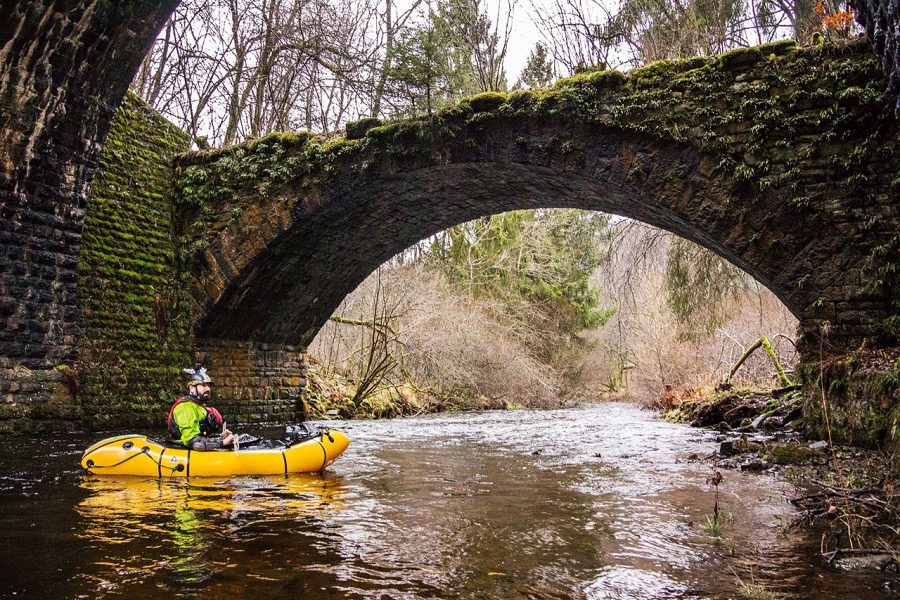
After crossing the Belgian-German border, it stays in Germany for several dozen meters, before crossing the border again (10-15 meters of Belgium), and again (a few hundred meters of Germany), and again (another 10-15 meters of Belgium), and again (several hundred meters of Germany), and again (still another 10-15 meters of Belgium), before finally entering Germany for a good while.
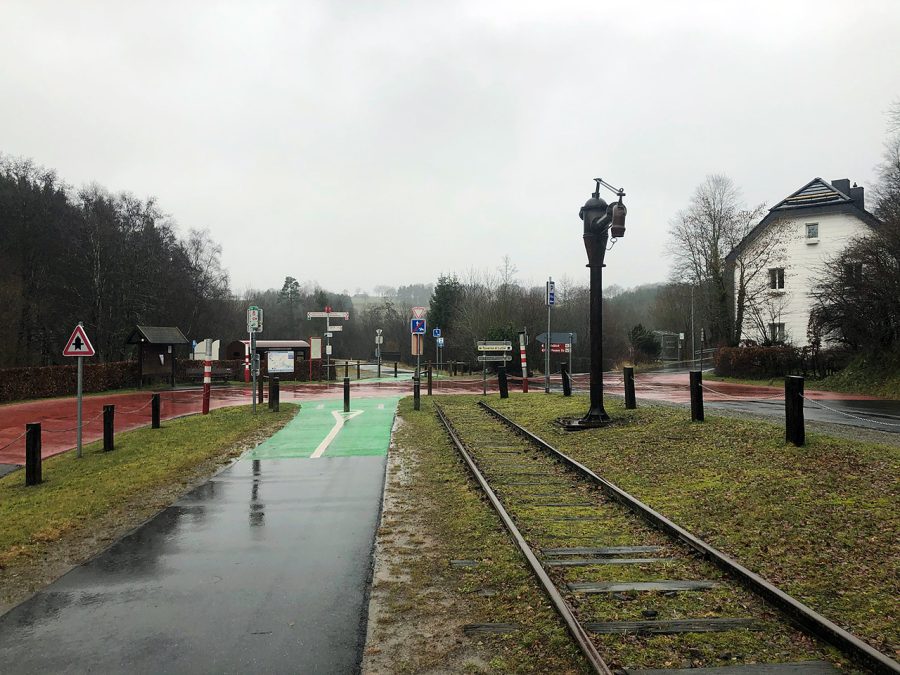
The reason for such a confusing border is the Vennbahn, a former German railway line the track bed of which (10-15 meters wide) after World War I became part of Belgium. This formed a very complex border line with several German enclaves scattered around there.
What makes packrafting such rivers interesting
There is no one common way how the borders are drawn across the river – it can be its geographical middle, or the middle of its channel (which is not the same thing). Alternatively, it can be one of the rivers banks that forms a border.
Because it is not always clear and you cannot always check your location on a map, you do not always know in which country you are at each point of time, which I find really fascinating. Moreover, you and your paddling partners might be in two separate countries at the same time. Or you might even be yourself in two countries at once – puzzling and exciting at the same time.
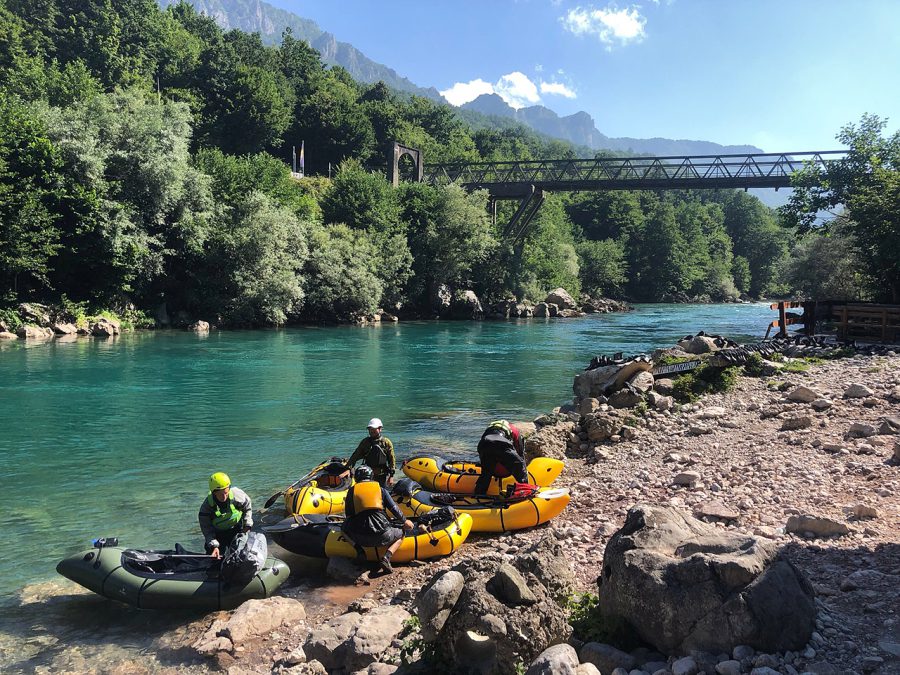
But paddling border rivers provides more than just this mental stimulation. You can have easy exposure to two distinct and, at times, rather different cultures, with their own languages, traditions and attitudes.
For example, when paddling the Dunajec river on the Polish – Slovakian border, we decide to stop for a lunch on the Slovakian side as we were curious about the local dishes they had (because my wife is Polish, I am familiar with the Polish cuisine). As it turned out, the prices were lower there as well.
In some case, it is not even a matter of cultural differences and prices, but how the rivers are being treated in different countries. For instance, when paddling the Tara Canyon in Montenegro, most of it you go through the Durmitor National Park, access to which requires a permit (and an expensive one at that; please see my previous articles).
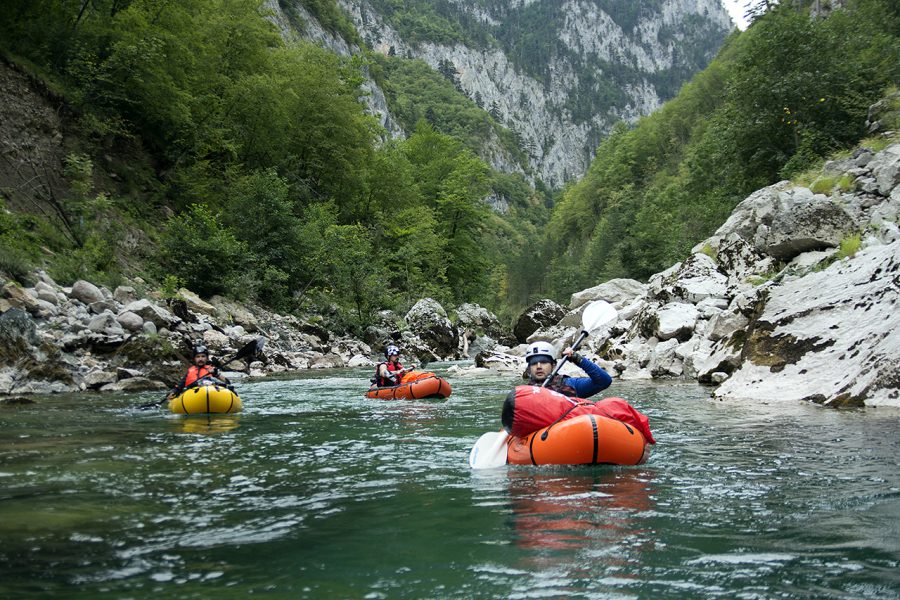
From the local paddlers, I also heard that in Montenegro they would have preferred to make paddling on the lower part of the river (after the national park) only with permits as well. However, the Bosnian side did not want do it and that is why the lower part is open to everyone.
Final thought
Looking back at the last 7 years, I can say that having a packraft made it possible for me to visit and see a lot of interesting places.It made me also change my attitude towards borders. Just a little bit.
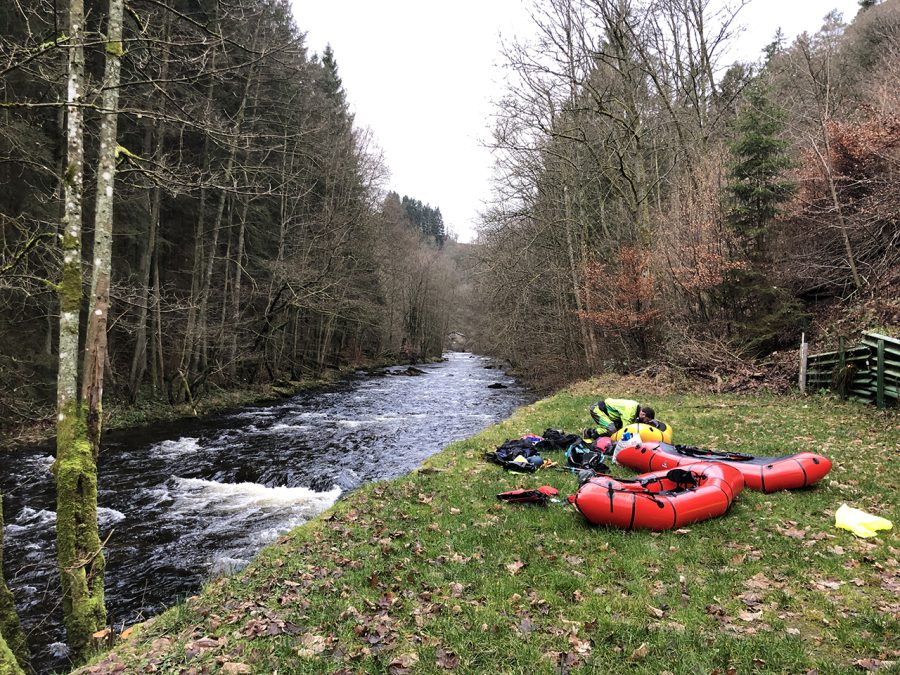
But what it definitely helps me to see differently is that border rivers do not only serve as a division, but can also be used as something that unites – they are not a barrier any more, but a road to exploration. And I am looking forward to paddling more of them.
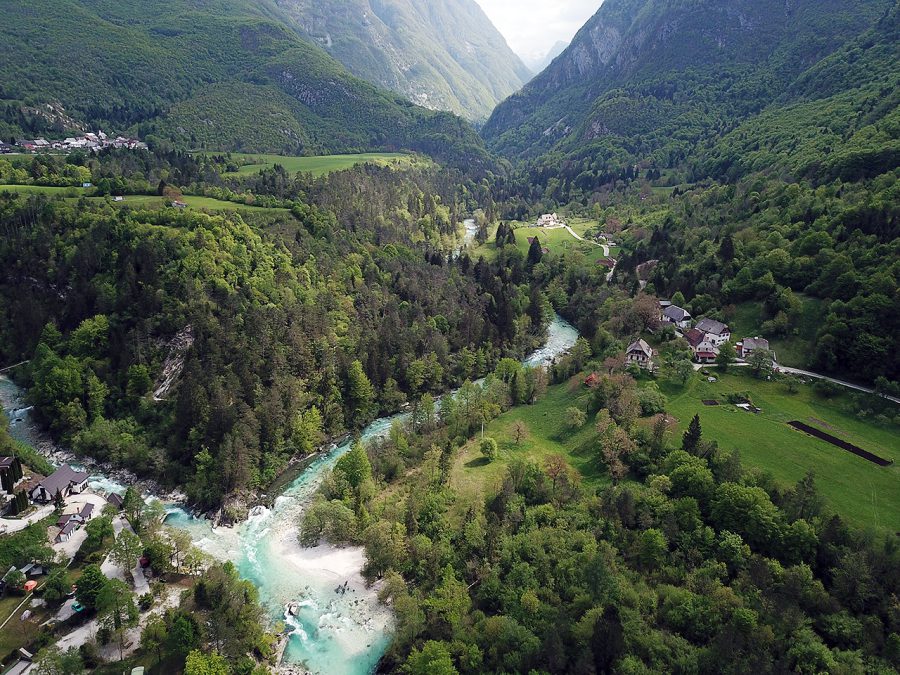
Related Articles
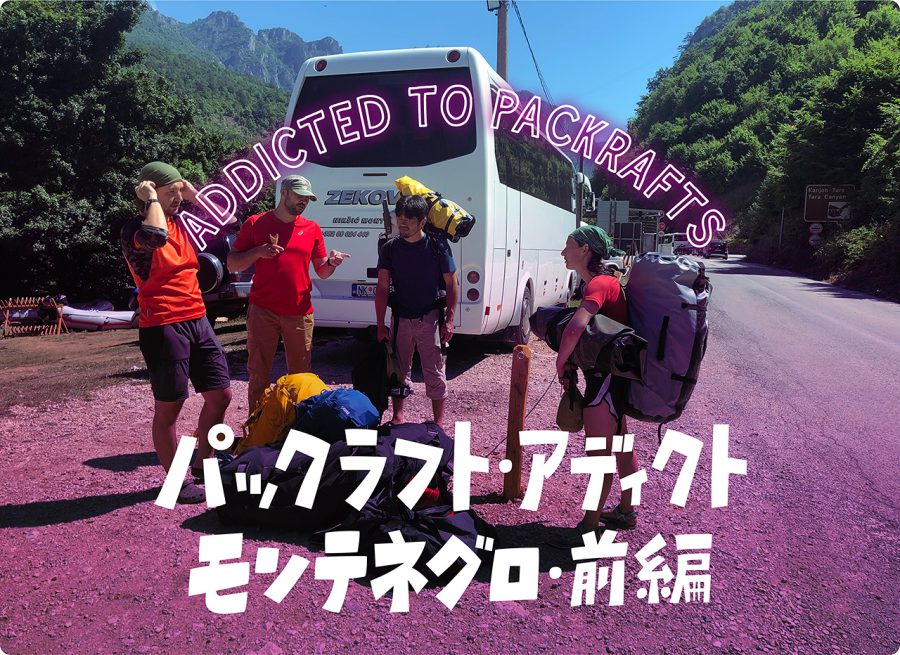
パックラフト・アディクト | #32 モンテネグロ周遊 <前編>タラ渓谷と地底湖をめぐる旅
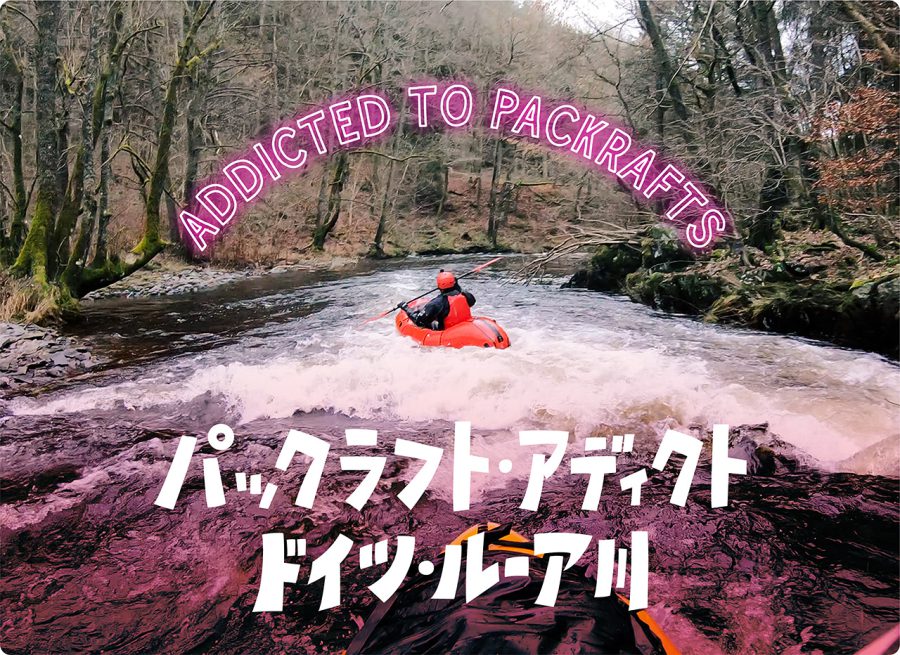
パックラフト・アディクト | #30 ドイツ・ルーア川 2Days Trip
- « 前へ
- 2 / 2
- 次へ »
TAGS:

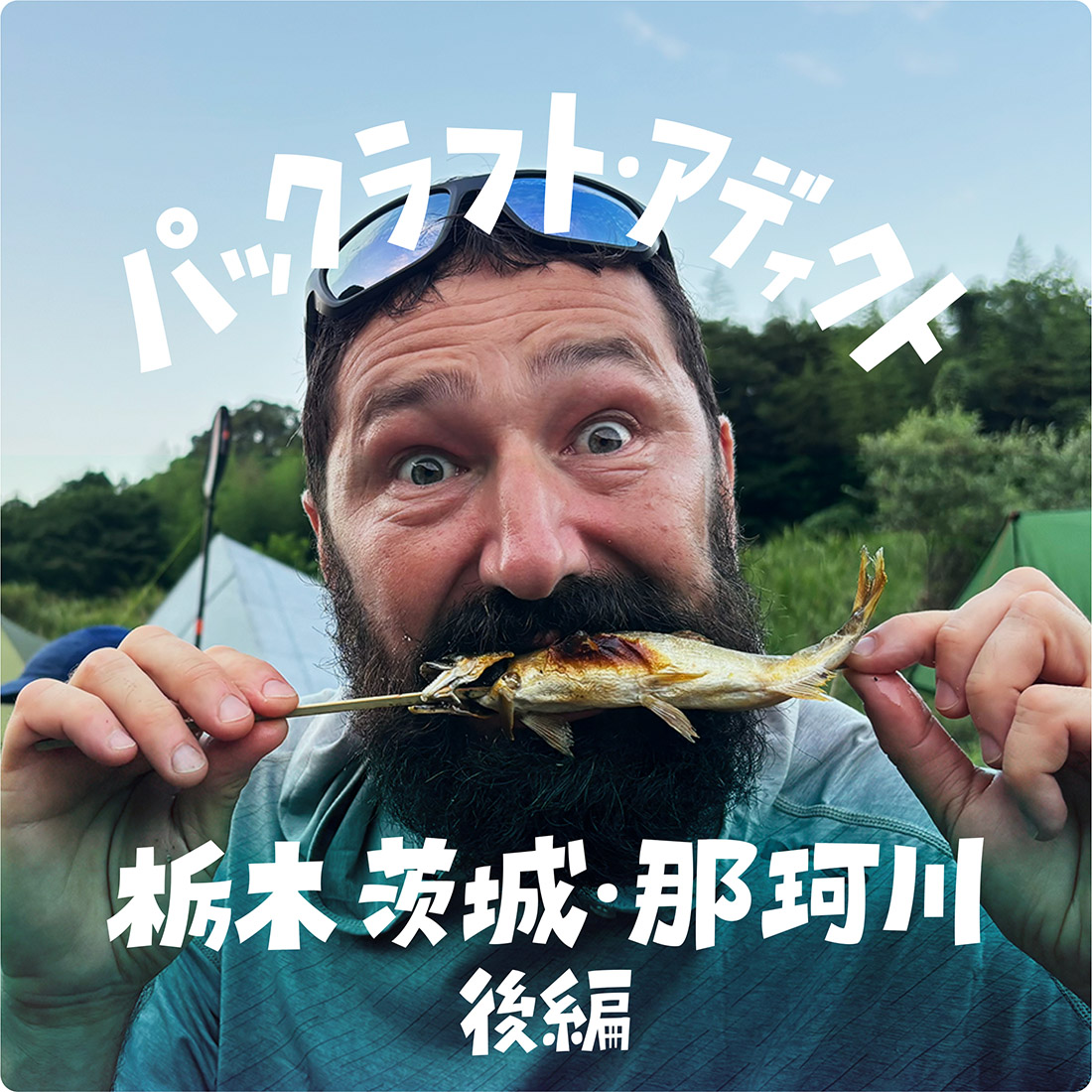
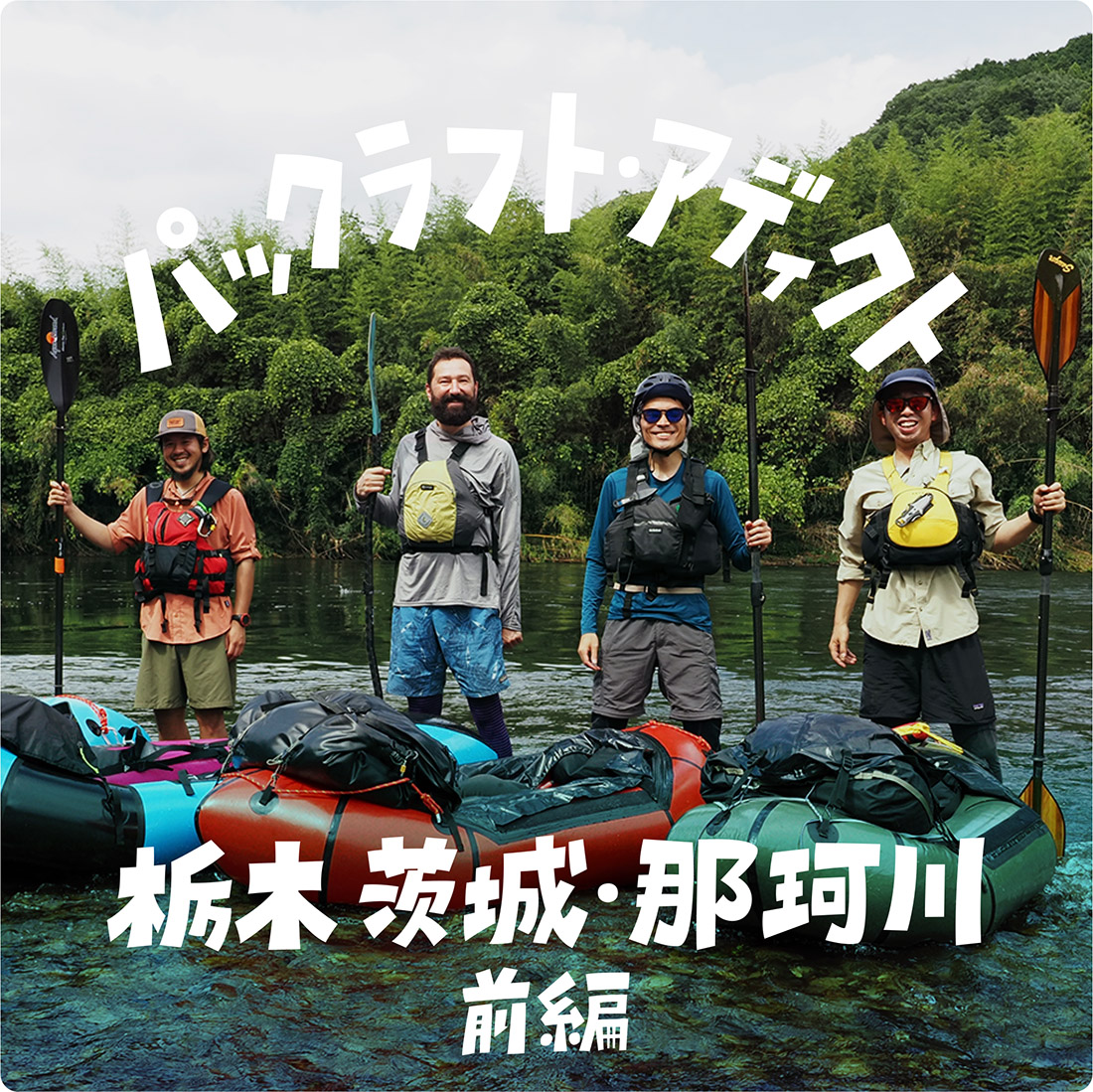
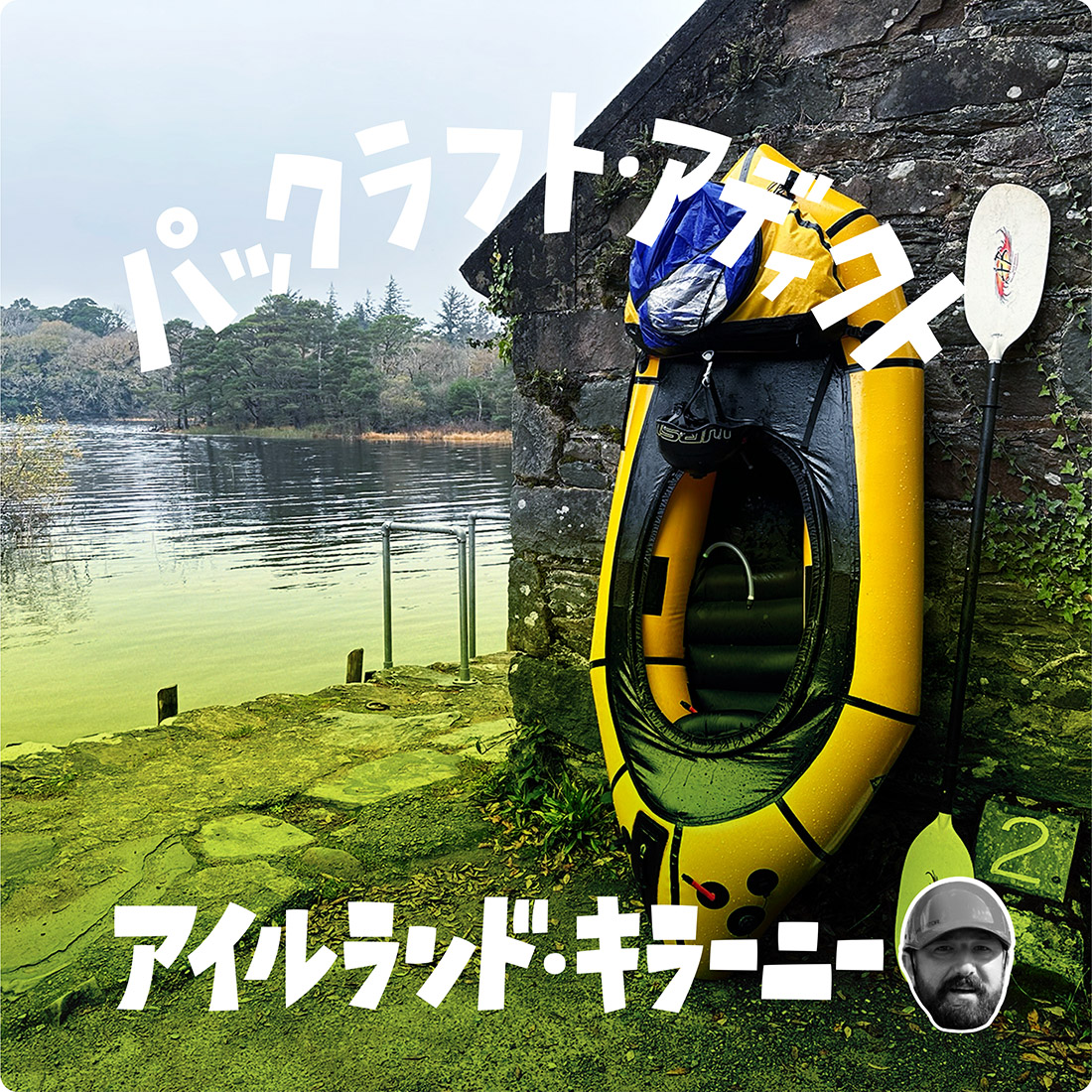










 ULギアを自作するための生地、プラパーツ、ジッパー…
ULギアを自作するための生地、プラパーツ、ジッパー…  ZimmerBuilt | TailWater P…
ZimmerBuilt | TailWater P…  ZimmerBuilt | PocketWater…
ZimmerBuilt | PocketWater…  ZimmerBuilt | DeadDrift P…
ZimmerBuilt | DeadDrift P…  ZimmerBuilt | Arrowood Ch…
ZimmerBuilt | Arrowood Ch…  ZimmerBuilt | SplitShot C…
ZimmerBuilt | SplitShot C…  ZimmerBuilt | Darter Pack…
ZimmerBuilt | Darter Pack…  ZimmerBuilt | QuickDraw (…
ZimmerBuilt | QuickDraw (…  ZimmerBuilt | Micro Pack …
ZimmerBuilt | Micro Pack … 














